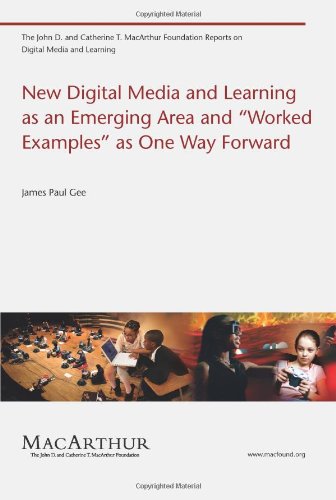

Most ebook files are in PDF format, so you can easily read them using various software such as Foxit Reader or directly on the Google Chrome browser.
Some ebook files are released by publishers in other formats such as .awz, .mobi, .epub, .fb2, etc. You may need to install specific software to read these formats on mobile/PC, such as Calibre.
Please read the tutorial at this link. https://ebooknice.com/page/post?id=faq
We offer FREE conversion to the popular formats you request; however, this may take some time. Therefore, right after payment, please email us, and we will try to provide the service as quickly as possible.
For some exceptional file formats or broken links (if any), please refrain from opening any disputes. Instead, email us first, and we will try to assist within a maximum of 6 hours.
EbookNice Team

Status:
Available4.4
29 reviews
ISBN 10: 0262513692
ISBN 13: 978-0262513692
Author: James Paul Gee
A proposal to move the academic area of digital media and learning toward more coherence.
In this report, noted scholar James Paul Gee discusses the evolution of digital media and learning (DMAL) from its infancy as an "academic area" into a more organized field or coherent discipline. Distinguishing among academic areas, fields, disciplinary specializations, and thematic disciplines, Gee describes other academic areas that have fallen into these categories or developed into established disciplines. He argues that DMAL will not evolve until a real coherence develops through collaboration and the accumulation of shared knowledge. Gee offers a concrete proposal of one way scholars in DMAL could move the area forward to a more cohesive, integrated, and collaborative enterprise: the production of what he terms "worked examples." In Gee's sense of a worked example, scholars attempting to build the new area of DMAL would publicly display their methods of valuing and thinking about a specific problem, proposing them as examples of "good work" in order to engender debate about what such work in DMAL might come to look like and what shape the area itself might take. The goal would not be for the proposed approach to become the accepted one but for it to become fodder for new work and collaboration. Gee concludes by offering a sample worked example that illustrates his proposal.
1. Introduction: Prototyping and Researching the Curriculum of the Digital Age
2. Curriculum Change and the Future of Official Knowledge
3. Networks, Decentered Systems, and Open Educational Futures
4. Creative Schooling and the Crossover Future of the Economy
5. Psychotechnical Schools and the Future of Educational Expertise
6. Globalizing Cultures of Lifelong Learning
7. Making Up DIY Learner Identities
8. Conclusion: An (Un)official Curriculum of the Future?
new digital media and learning
new media and digital art
new media and digital culture
new media digital
new media and digital design
Tags: James Paul Gee, New Digital Media, an Emerging Area, Worked Examples, One Way